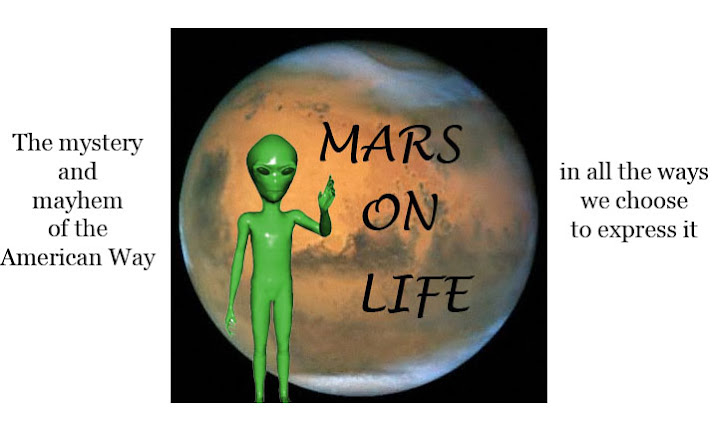The end of the millennium did not occur at midnight on January 1, 2000. The end of the millennium occurred eight years and 23 three days later with Valentino's retirement. It was then that the door closed not just on a designer's career, but on a way of life.
Valentino was in business for 45 years, and during those four and a half decades that business never lost its focus. What Valentino sold was celebration. While Chanel's forward trajectory aimed at the anticipated BRIC consumer, Valentino remained Gatsby-like, designing for a dying material world.
Although Valentino's couture was flawlessly worn by Princess Diana, Marella Agnell i, Audrey Hepburn, and Farah Diba, his work seemed to exemplify Park Avenue and American chic. In 2008, Park Avenue spells purposeless socialite. In 1968, Park Avenue denoted all that was right about the American woman. America still held firm to the prevailing notion that a woman's place was at her husband's side. It was her duty to effortlessly run a household and appear on her husband's arm as an object of pride. Hillary Rodham was still at Wellesley. If the Park Avenue socialite was the international glamour model of American womanhood, then we were a nation of cocktails, bouffants, and fatuous, non-threatening chit-chat. In the suburbs, where we might sew a Valentino design from a Vogue pattern, we were patio cookouts, PTA meetings, and pigs in a blanket.
i, Audrey Hepburn, and Farah Diba, his work seemed to exemplify Park Avenue and American chic. In 2008, Park Avenue spells purposeless socialite. In 1968, Park Avenue denoted all that was right about the American woman. America still held firm to the prevailing notion that a woman's place was at her husband's side. It was her duty to effortlessly run a household and appear on her husband's arm as an object of pride. Hillary Rodham was still at Wellesley. If the Park Avenue socialite was the international glamour model of American womanhood, then we were a nation of cocktails, bouffants, and fatuous, non-threatening chit-chat. In the suburbs, where we might sew a Valentino design from a Vogue pattern, we were patio cookouts, PTA meetings, and pigs in a blanket.
The American Valentino woman posed in the pages of Town and Country magazine while underscoring the effort that went into her appearance. One could not wear Valentino without a visit to the Kenneth salon. Jackie O. went to Kenneth, Jackie O. wore Valentino. For a generation of women, Jackie O. was the WASP ideal, a patrician figurehead and style arbiter whose wardrobe choices greatly impacted the retail market. Park Avenue literally followed suit. The Valentino suit, with its genteel elegance and everyday ladies-who-lunch correctness, stood in stark contrast to the braless devolution into feminist fashion.
Valentino also dressed Hollywood. Where Jackie O. was an icon of the educated, upper-middle-class wife, Elizabeth Taylor was her cruder counterpart, and one whose allure cut across class divisions. In the pre-AIDS days, Valentino designed for celebrities who had no cause célèbre other than a commercial endorsement.
Throughout his career, Valentino was often at odds with the popular groundswell. In the sixties it was the women's libbers, in the eighties it was the working woman, in the new millennium it was the need to innovate.
Valentino was often at odds with the popular groundswell. In the sixties it was the women's libbers, in the eighties it was the working woman, in the new millennium it was the need to innovate.
Innovation is a dirty word, an offensive action verb employed to find fault with solidity and tradition. "But can he innovate?" is the question of the moment, and one that is just as readily asked in the fashion industry as it is in technological circles. Innovate or perish. Valentino never grasped evolution; he conformed only to his own vision of a social circle of diminishing numbers.
The scope of Valentino's innovation was to dress the extraordinarily rich in a tasteful manner. In the face of multiple stylistic changes, he maintained a resolute equilibrium. He celebrated good (if sumptuous) taste and answered our need for stable identification, never perverting his manifesto to appeal to trend. In Valentino's world, there were no trends. There was only an endless round of places to go and people to see.
It was the eighties, a decade in which Valentino's signature red represented the unquenchable pursuit of power, that started his long slide into supposed irrelevancy. The eighties woman with her newly minted MBA was trained to compete on traditionally male playing fields. No longer would she be content to be a trophy wife who spent her days planning soirées and having fittings at Saks. Rather, she was apt to be found in the boardroom with her tight helmet of hair and sensible automaton business suits.
The opposite of what Valentino epitomized was espoused by the 1978 book Dress for Success. This working woman's bible, written by John T. Malloy, turned fashion from an institution into the institutional. The author dictated that in order to be successful, women must reject those fashion details that signified sexuality. In this era, rules were not made to be broken. The wrong color or the wrong shoes would spell career disaster. The militant rules were immediately embraced by the new working woman, while her uptown, Valentino-wearing neighbor (and the neighbor's lifestyle) was seen as outmoded and risible.
The strong red that was Valentino's signature color suddenly came to represent career and not couture. Although Valentino employed it to signify feminine power, in the eighties it telegraphed upward financial mobility that could be achieved without a man. Valentino's woman was deracinated and told to buy a briefcase. This influence could be seen in the evolution of luncheon suits into the power suits worn by Nancy Reagan. Hats and gloves were no longer required.
Over the next quarter century, the younger socialite lost her separation from pop-celebrity culture. As the two cultures commingled and became inseparable, the allure of class insularity was no longer appea ling. What used to be called "class" became a synonym for being out of step with the times. We would have our rich, but they would be illiterate. The pernicious influence of cheap celebrity dominated magazine covers and editorial. The clients who might have followed their mothers into Valentino were instead betrayed by the vulgar-chic popular culture.
ling. What used to be called "class" became a synonym for being out of step with the times. We would have our rich, but they would be illiterate. The pernicious influence of cheap celebrity dominated magazine covers and editorial. The clients who might have followed their mothers into Valentino were instead betrayed by the vulgar-chic popular culture.
It was the right time for retirement. These are difficult times where one must have a political platform or be seen as obtuse and unaware. Whatever the real motivation behind his stepping down, Valentino was seen as an anachronism who was socially conscious only as respects his own social class.
In the media, there was no mention of passing a torch, because the torch was deliberately extinguished in a parade of red-draped models. There was only the brief and impartial mention that the house would now be guided by Alessandra Facchinetti, former designer of Gucci women's wear. No one speculated on what she might bring to the design table, because no one expected a legacy transition. Being clothespinned by tradition is not the millennium way.
Friday, January 25, 2008
The Last of the Red Hot Lovers
Labels:
Valentino Spring 2008
Subscribe to:
Post Comments (Atom)









13 comments:
It seems terrible that I could never relate to Valentino in the ways you described... women's lib, career motivations of the 80's etc all playing a part.... yet, now I realise, Valentino, irrelevant or not stuck to his own tunnel vision and never rode with the trend waves... for that, respect must be paid....
Now Val can devote himself 100% to his many pugs, which I consider to be an excellent choice.
WB, I am guilty of puggery (two). They are sitting here while I write this. Valentino is, obviously, their favorite designer.
SB, I really think that a generation gap played into Valentino's retirement. Valentino was designer to my mother's generation (and somewhat to mine), but not yours. Your generation is far more creative--we had Gaultier as the main innovator.
Valentino had a good run from the sixties to the eighties, when his aesthetic fit in with ours (I mean WASPy America).
what some awesome fashion reviews we've got here !! always so descriptive and true !! i adore the way u right
Thank you, MR Style!
I think that Valentino could design a gown like no other- his evening dresses were always gorgeously cut and fit like gloves. The mother of one of my good friends is one of his best friends, so he designed my friend's gown for her debut at Le Crillon- even just by looking at the pictures you can see that the dress was a complete masterpiece, gorgeously made yet totally age appropriate.
I understand that he hasn't been interested in keeping up with all of the trends, but someday I would really love to own and wear one of his gowns- I think it would make me far more beautiful than most dresses by designers of my generation.
Laurakitty, this is why I selected that beautiful ensemble as illustration. Completely timeless and "correct" (a term that has gone completely out of fashion) and..ladylike.
There was also a pistachio gown in there that was stunningly well cut.
You make an excellent point about how the new designers are not using the female form as the basis for fit, drape, and flow; rather, often they use it as a posterboard.
what a beautiful post, such a wonderful love letter to Valentino.
I think anyone could describe better the role of Valentino than you when wrote "The scope of Valentino's innovation was to dress the extraordinarily rich in a tasteful manner".
He wasn't an innovator in the big meaning of the term, like Balenciaga or JPG, but he definitely moved on with the times making his rich ladies looking fab every single year of those 45 years at the head of his house. And those are a lot of "fashions" if you think about it!
Ooops... i meant "no one could describe better than you" instead of "anyone could..."
English language gets in my way of expression!
Bravo...I don't think there are too many better-written posts about the passing of Valentino's era, anywhere on the net.
When I was in my candy-floss dressing up stage, Valentino more or less embodied all the frills and ruffles I could ever want. But he has to be respected for sticking to his vision for so long...even if it wasn't a vision that was entirely in synch with how women wanted to see themselves.
BB and BFH, thank you!
That whole crop of designers (and not just HC designers) really did represent a very certain era and a way of life that has little relevancy today or today's modern (younger) woman, as Susie points out...
Also falling under this mantle: Beene, Blass, etc...
I'm in the midst of writing a long review of this collection myself...I feel it's more than just about his legacy.
(btw - I'm sure you've now begun to understand my blogging pace - it's a 'the check's in the mail' kind of temporality)
You know, Riz, that's what makes blogging and the community of bloggers so great. Each person has his or her own style, references, and opinions, and by publishing them shares them with others.
It would be a dull and rendundant place indeed if we all had exactly the same angle and wrote in the same style and posted the same details; why, it might be just like some of the more unoriginal thoughts of the mainstream media.
Wouldn't it be awful if we all wrote fashion blogs and were held to some standard of content or breadth of coverage?
Just like a press release.
Post a Comment